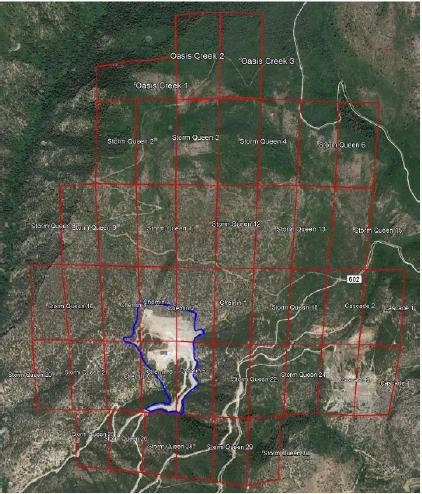Overview
We were incorporated in the State of Nevada in August 2012 under the name “Online Yearbook” with the principal business objective of developing and marketing online yearbooks for schools, companies and government agencies.
In November 2014, Rocky Mountain Resource Holdings, Inc. (“RMRH”) became our majority shareholder by acquiring 5,200,000 shares of our common stock (the “Shares”), or 69.06% of the then issued and outstanding shares, pursuant to stock purchase agreements with Messrs. El Maraana and Salah Blal, our former officers and directors. The Shares were acquired for an aggregate purchase price of $357,670.
In December 2014, we changed our name to “RMR Industrials, Inc.” and on January 1, 2020, the Company changed its name from RMR Industrials, Inc. to “Rocky Mountain Industrials, Inc”.
In July 2016, we formed RMR Aggregates, Inc., a Colorado corporation (“RMR Aggregates”), as our wholly-owned subsidiary. RMR Aggregates was formed to hold assets whose primary focus is the mining and processing of industrial minerals for the manufacturing, construction and agriculture sectors. These minerals include limestone, aggregates, marble, silica, barite and sand.
In October 2016, pursuant to an Asset Purchase Agreement with CalX Minerals, LLC, a Colorado limited liability company (“CalX”), RMR Aggregates completed the purchase of substantially all of the assets associated with the Mid-Continent Quarry on 41 BLM unpatented placer mining claims in Garfield County, Colorado. CalX assets include the mining claims, improvements, access rights, water rights, equipment, inventory, contracts, permits, certain intellectual property rights, and other tangible and intangible assets associated with the limestone mining operation.
In January 2018, the Company formed Rail Land Company, LLC (“Rail Land Company”) as a wholly-owned subsidiary to acquire and develop a rail terminal and services facility (the “Rail Park”). Rail Land Company purchased an approximately 470-acre parcel of real property located in Bennett, Colorado in February, 2018. In July 2018 we exercised our option to acquire an additional approximately 150 acres for a total of approximately 620 acres. The Company’s development of the Rail Park is intended to expand the customer base for our products by utilizing rail freight capabilities to reach customers in the greater Denver area and by expanding our business to include rail transportation solutions and services.
On April 26, 2019, RMR Logistics entered into an asset purchase agreement with H2K, LLC, a Colorado limited liability company (the “Seller”) pursuant to which RMR Logistics acquired the Seller’s trucking assets.Critical Accounting Policies and Use of Estimates
The preparation of financial statements in conformity with GAAP requires management to make estimates, judgments, and assumptions that impact the reported amounts of assets, liabilities, and expenses, and disclosure of contingent assets and liabilities in the financial statements and accompanying notes. Actual results could materially differ from those estimates. Management considers many factors in selecting appropriate financial accounting policies and controls, and in developing the estimates and assumptions that are used in the preparation of these financial statements. Management must apply significant judgment in this process. In addition, other factors may affect estimates, including: expected business and operational changes, sensitivity and volatility associated with the assumptions used in developing estimates, and whether historical trends are expected to be representative of future trends. The estimation process may yield a range of potentially reasonable estimates of the ultimate future outcomes and management must select an amount that falls within that range of reasonable estimates. Although these estimates are based on the Company’s knowledge of current events and actions it may undertake in the future, actual results may ultimately materially differ from those estimated amounts and assumptions used in the preparation of the financial statements.
Segment Reporting
Operating segments are identified as components of an enterprise about which separate discrete financial information is available for evaluation by the chief operating decision-maker in making decisions regarding resource allocation and
